-
Explore IKE
IKE Products
-
Resources
Blogs & Resources
-
Company
About ike
- CompanyLearn what IKE is all about, including our mission and values
- The IKE TeamIndustry experts and exceptional individuals: meet the IKE Team
- InvestorsFinancial information, Market Announcements, Leadership & Governance
- NewsWhat’s new in the world of IKE
- Contact UsReach out with any questions or feedback
-
The PoleOS™ Company
Understanding One of the Most Commonly Applied (and Disputed) Rules of the NESC
There is a sentence on page one of the National Electrical Safety Code book that sums up why the Code is so important to anyone responsible for electrical poles and overhead wires.
“The NESC contains the basic provisions that are considered necessary for safeguarding the public and utility workers.”
The Code is all about safety, starting with that of the public.
The most common voltage for overhead wires is 12.47 KV. Now, say that voltage without the “K” and you’ve got twelve thousand, four hundred seventy volts. Those wires are bare! It’s unbelievable when you think about it. That’s why we’ve got to safeguard the public and why the Code is so important.
In my experience, one of the most commonly used tables in the entire NESC Code book is Table 232-1, titled Vertical Clearances of Wires, Conductors, and Cables above Ground, Roadway, or Water Surfaces.
Row five of this table specifically deals with “Spaces and ways subject to pedestrians or restricted traffic only.”
If we look at the footnote to this row–and remember that footnotes in the NESC are just as important as the rule itself–the Code defines spaces and ways subject to pedestrians on foot or restricted traffic only as “those areas where riders on horses or other large animals, vehicles or other mobile units exceeding a total of eight feet are prohibited by regulation or permanent terrain configuration or are otherwise not normally encountered nor reasonably anticipated.”
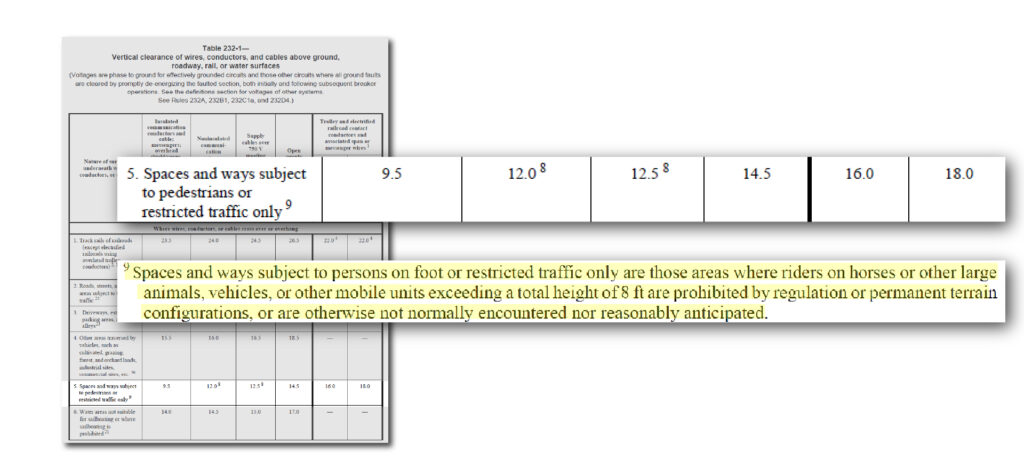
In my career as an expert witness, I’ve often been asked to interpret whether this one rule in this single row of Table 232-1 applies to a specific space where an accident has taken place due to a low line being contacted by something other than a pedestrian.
Let’s take a look at a few real-life example cases I’ve been involved with and determine whether or not they should be classified as spaces and ways subject to pedestrian or restricted traffic only.
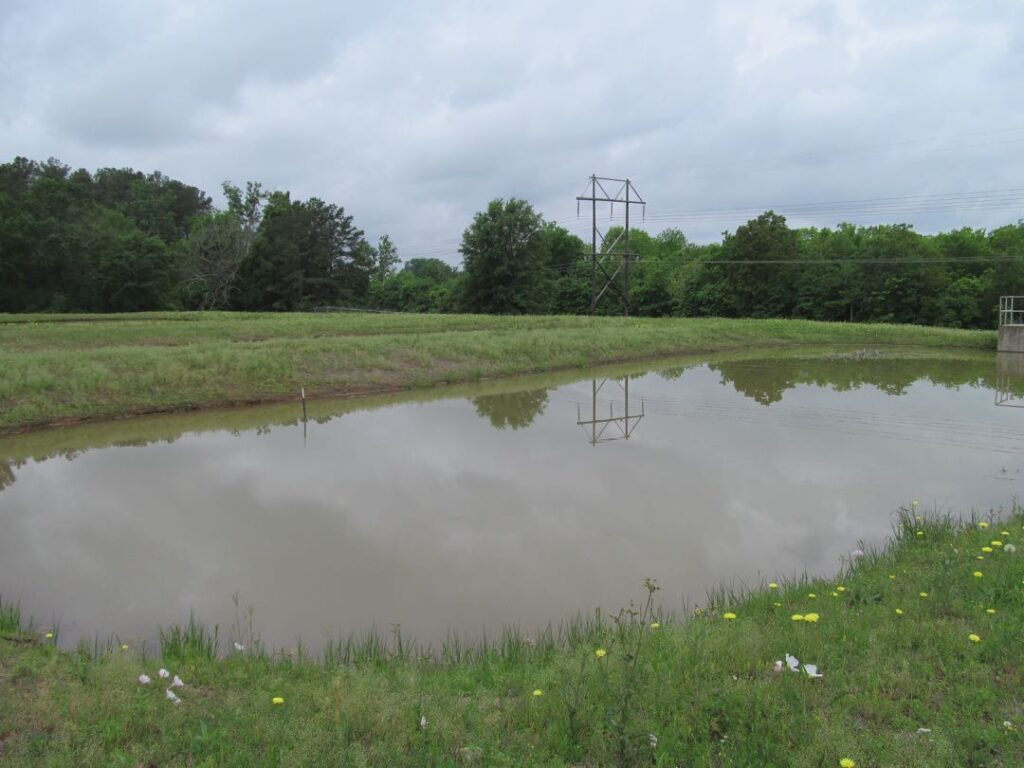
Here we have a sewage treatment lagoon with a low-hanging distribution line behind it that met the pedestrian criteria but it didn’t meet the non-pedestrian clearance because it was lower than eight feet.
So how would you classify this area? Is it pedestrian-only?
Well, if we look at another picture (as I did when I was asked that question as part of a case)…
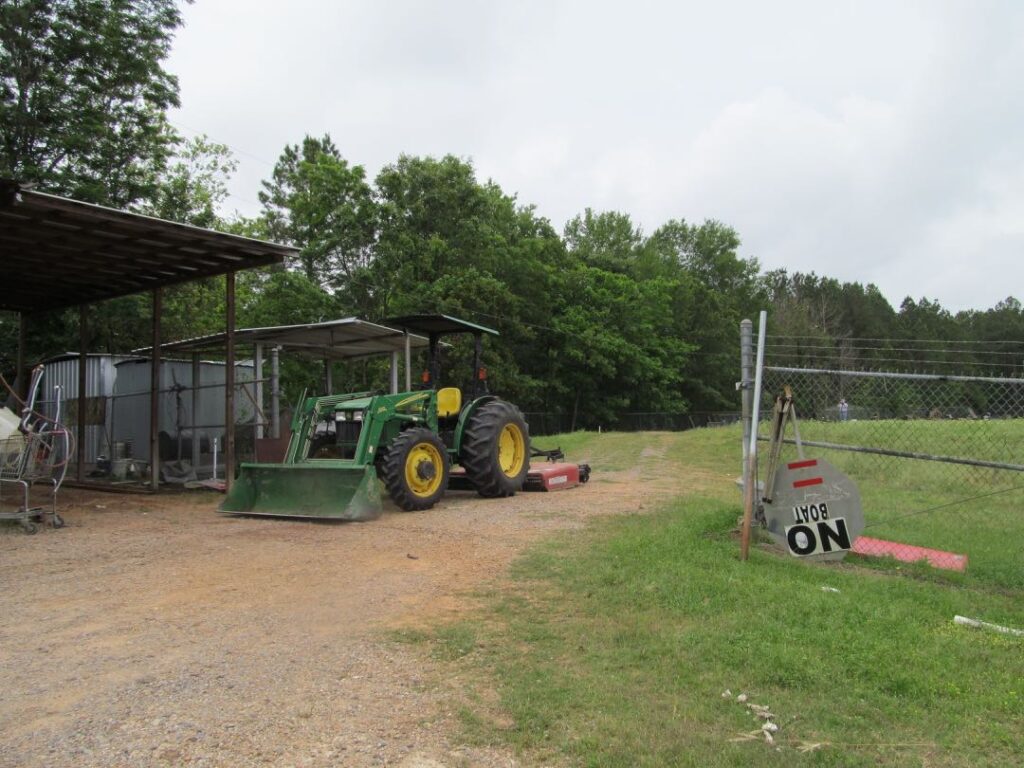
Sometimes you have to do a little detective work (like looking around a bit) and you find something like a lawnmower that’s used to cut the grass around the lagoon and the pole. That mower is taller than eight feet, so according to the rule (specifically, the footnote of the rule which is part of the rule), I would NOT call this area pedestrian only.
Let’s look at another photo from another case.
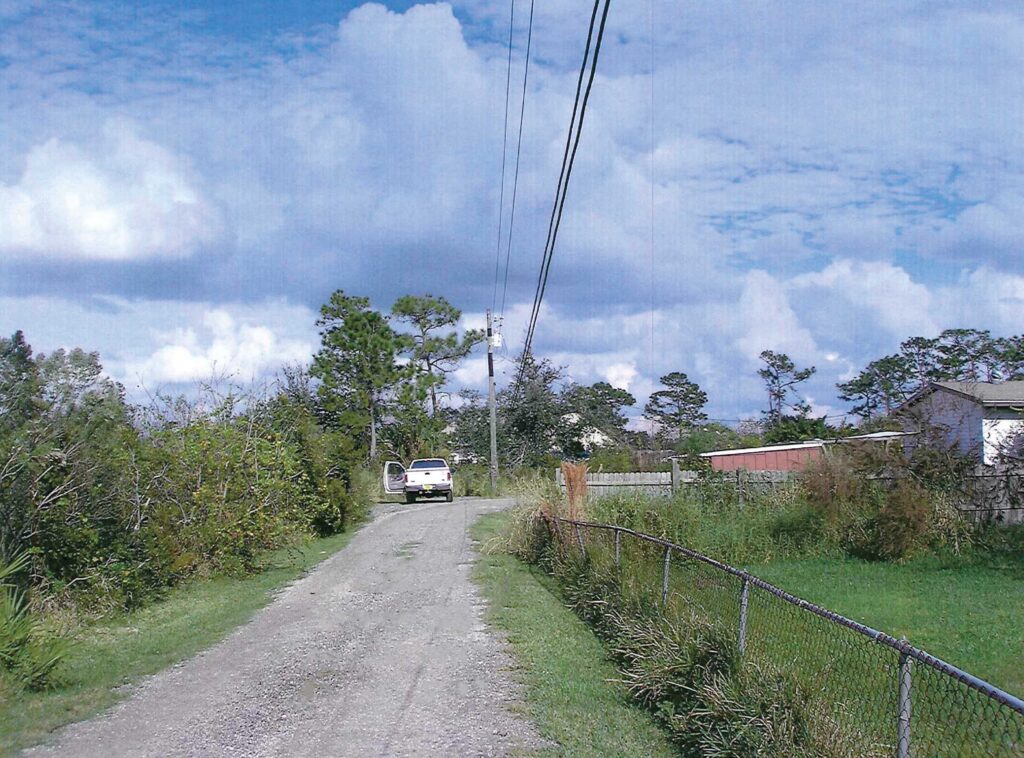
Here we have a private driveway leading to a single home. In this case, the communication line was low and got snagged by a work truck. The driver got out, yanked on the cable to free it from the truck, and ended up hitting the power line with the communication cable. He lost three fingers and the electric utility ended up with a lawsuit.
The electric utility argued that the line was hanging over, not the driveway, but the little strip of grass to the right of the driveway which they said was pedestrian-only.
How would you rule in this case?
If we look in the definition section of our code book, we’ll see that the NESC defines a roadway as including the shoulder. That means the grass strip in this picture is part of the roadway according to the NESC, and we can not call it pedestrian only.
One more scenario:
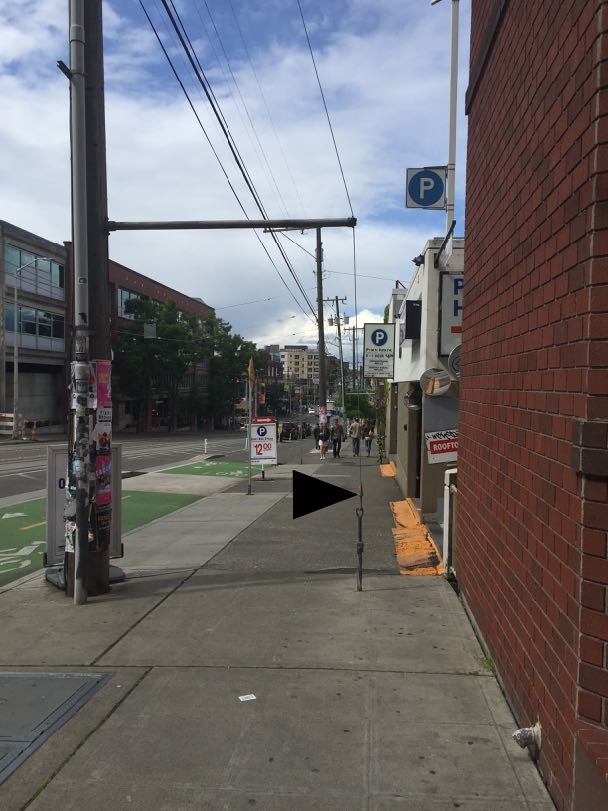
This photo is not from a lawsuit, but I like to discuss it with Rule 232-1. (The arrow/triangle is pointing out that the the orange marker is missing on the sidewalk guy.) I originally looked at this as a pedestrian-only area since it was a sidewalk.
What do you think?
But a colleague of mine pointed out that where he is from, it is not uncommon for Police to patrol sidewalks on horseback.
Let’s go back to our rule as it’s defined in the NESC. As we’ve established, the Code clearly defines pedestrian-only areas as “those areas where riders on horses or other large animals, vehicles or other mobile units exceeding a total of eight feet are prohibited by regulation or permanent terrain configuration or are otherwise not normally encountered nor reasonably anticipated.”
Sure enough, in the county where this picture was taken, horseback-mounted police officers are normally encountered and therefore should be reasonably anticipated.
So, I would not call this area pedestrian only.
When, then, should pedestrian-only designations be made?
Let’s look at an important page I include in my 2023 NESC Handbook (McGraw Hill’s National Electrical Safety Code Handbook) that I’ve authored and published since 2002.
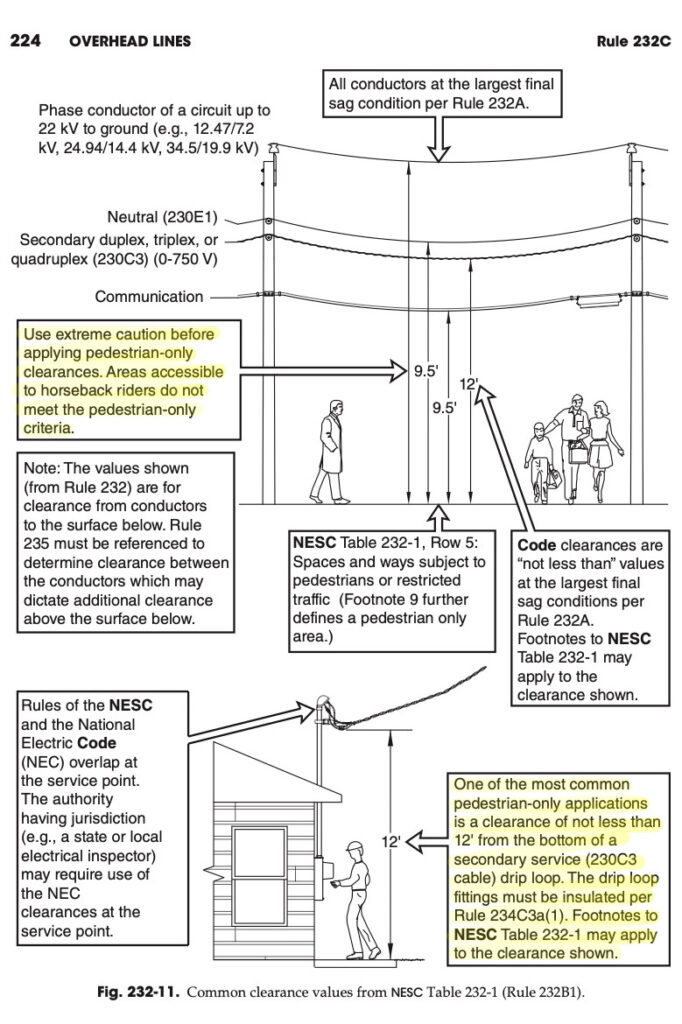
The top box on the left is very relevant to Rule 232-1 and applies to pedestrian-only clearances. It sums up the essence of what I believe concerning how and when pedestrian-only should be applied. It reads: “Use extreme caution before applying pedestrian-only clearances. Areas accessible to horseback do not meet the criteria.”
Some circumstances, however, do meet the pedestrian-only criteria. If we look at the box in the lower right of the page in the NESC Handbook, it reads, “One of the most common pedestrian-only applications is a clearance of not less than 12’ from the bottom of a secondary service (230C3 cable) drip loop.” This circumstance applies to areas that are right up against a home or, for another example, in a residential backyard.
My final word on the rule is on display in the box on the upper left of the page. Use extreme caution before applying pedestrian-only.
Know the code. Stay safe.
David J. Marne is a registered professional electrical engineer and author of McGraw-Hill’s National Electrical Safety Code® (NESC®) Handbook. He serves on NESC® Subcommittee 4, Overhead Lines – Clearances, and is a nationally recognized speaker on the NESC®.
Learn more and register for David Marne’s open enrollment, day-long classes on the 2023 NESC, hosted by IKE.
The latest from the IKE Wire
Communications
/ 2 Min Read
Slow Permitting Approval Process? There’s a Federal Committee for That.
For communications companies seeking to expand broadband networks to new customers, a...
Read More
Engineering
Why are High Voltage Overhead Wires Bare?
The electrical cords that help power everyday life in our homes and workplaces are co...
Read More
Utilities
Transforming Utility Work: Three Technologies and the Power of GIS Data
Over the past two decades, technological advancements have been reshaping the utility...
Read MoreSubscribe to the IKE Wire
Get the latest insights on data acquisition and structural analysis from the ikeGPS experts.
